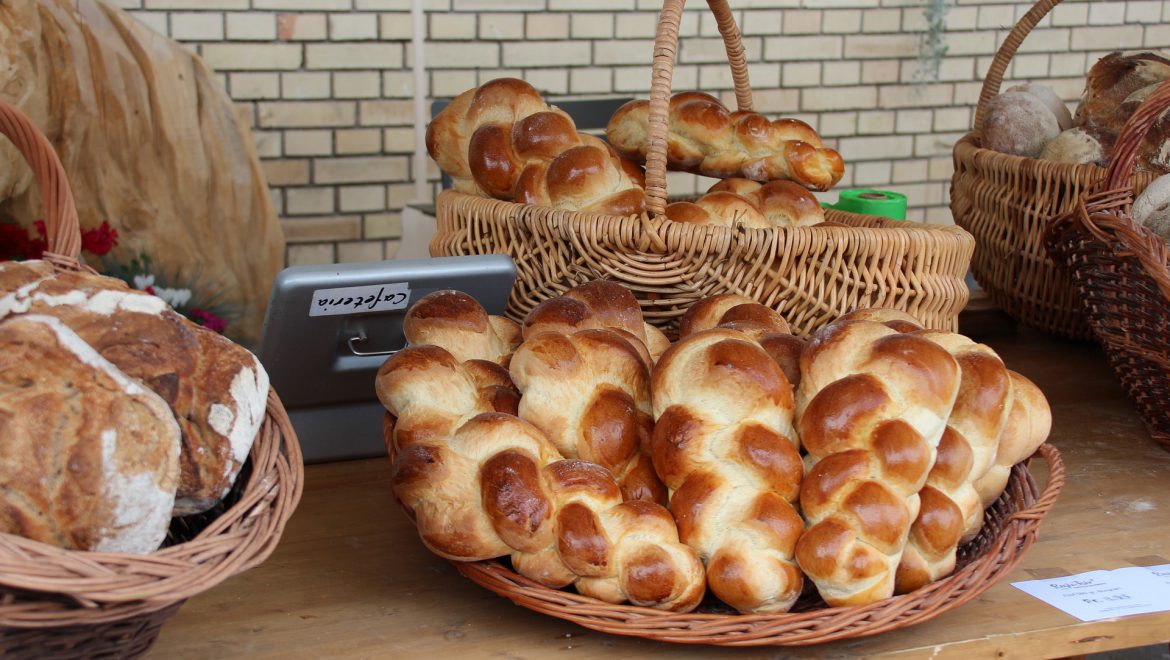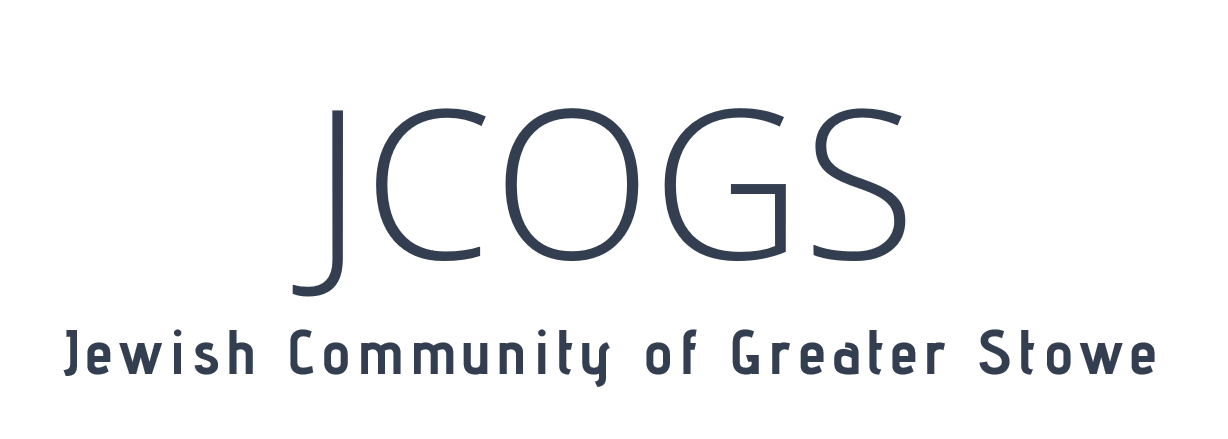
This detailed article by Chaviva Gordon-Bennett explains the meaning, origins, customs, and practical how-to’s of the blessing over the bread on Shabbat, including the Hebrew, English and transliterated text of the blessing. Published on ThoughtCo, a website that provides in-depth articles about a wide range of topics to a general audience, this article would be helpful to anyone looking to learn the variety of laws and customs surrounding this ritual, regardless of their background. Gordon-Bennet writes articles about Jewish topics for many different publications, including the Huffington Post and Lubavitch.com.
How to Say the HaMotzi Blessing:
What is hamotzi? Where does it come from? How do you do it?
In Judaism, every act large and small receives a blessing of some variety, and the simple act of eating bread is among these recipients. In this we find the hamotzi blessing over bread.
Meaning
The hamotzi (המוציא) blessing translates from the Hebrew literally as “who brings forth” and is what Jews use to refer to the prayer made over bread in Judaism. It is actually part of a longer blessing, which you will find below.
Origins
The requirement for a blessing over bread is one of the earliest and most basic of the blessings. The origins of the significance of bread on the Jewish Sabbath comes from the story of the manna that fell during the Exodus from Egypt in Exodus 16:22-26:
“It came to pass on the sixth day that they gathered a double portion of bread, two omers for [each] one, and all the princes of the community came and reported [it] to Moses. So he said to them, That is what the Lord spoke, Tomorrow is a rest day, a holy Sabbath to the Lord. Bake whatever you wish to bake, and cook whatever you wish to cook, and all the rest leave over to keep until morning. Six days you shall gather it, but on the seventh day [which is the] Sabbath on it there will be none. So they left it over until morning, as Moses had commanded, and it did not become putrid, and not a worm was in it. And Moses said, Eat it today, for today is a Sabbath to the Lord; today you will not find it in the field.”
From here the ha’motzi blessing arose as an homage to God’s kindness and promise to provide sustenance to the Israelites.
How To
Because the most common occurrence of needing to know the hamotzi blessing occurs on Shabbat and Jewish holidays, that will be the focus here. Please note that, depending on the community you’re in, the hand-washing ritual might resemble two different orders:
1. Hand washing prior to both the kiddush blessing over wine and the hamotzi blessing (some call this the “Yekki” way, which means German), or
2. The kiddush blessing is recited, then everyone washes “al netilyat yadayim,” and then hamotzi is recited.
Either way, during kiddush it is traditional to place the bread or challah on a special challah board or tray (some are elaborately carved, others have silver adnorments, while others still are made of glass and delicately etched with verses related to Shabbat) and then covered with a challah cover. Some say the reason is that you don’t want to embarrass the challah while honoring and sanctifying the wine. On Shabbat, this is the process for the hamotzi blessing:
1. Everyone washes their hand using a vessel or cup known as a negel vasser (Yiddish for “nail water”) or al netilyat yadayim cup, making the appropriate al netilyat yadayim blessing.
2. Once everyone is seated at the table, the leader (individual reciting the blessing) keeps everyone in mind so that they can be yotzei to the blessing in order that everyone at the table doesn’t have to recite the blessing individually. Yotzei essentially means that one’s religious obligation is fulfilled by the act of another (the same scenario applies on Shabbat or a Jewish holiday when the head of the table recites kiddush over wine on behalf of the attendees).
3. The leader will take the two loaves of challah used on Shabbat (but really anything works, whether bagels, matzah on Passover, or rolls), raise them up with both hands, and recite the following blessing:
ברוך אתה יי אלוהינו מלך העולם המוציא לחם מן הארץ
Baruch atah Adonai, Eloheynu melech ha’olam, ha’motzi lechem min ha’aretz.
Blessed are you Lord, our God, King of the universe, who brings forth bread from the earth.
4. After the prayer, everyone responds “amen” and waits for a piece of bread to be passed to them to fulfill the blessing.
It’s common not to speak between the blessing and the actual eating of the bread, because theoretically there should be no break between any blessing and the act that it refers to (e.g., if you say a blessing over a piece of cake, make sure you can eat the cake right away and that you don’t have to wait to cut it or serve it).
Other Customs
There are several optional actions and traditions that can pepper the Shabbat hamotzi ritual, too.
1. Some will uncover the two loaves of bread and use a knife to slightly graze one of the loaves. One reason for this is that, mystically speaking, it is like marking God’s name on the bread. Another reason is that Jews try to minimize the length of time between making a blessing and eating, but when you need the loaves to be whole to make the hamotzi blessing on Shabbat. The compromise is to make a little cut to hasten the actual slicing of the bread after you make the blessing.
2. Some will leave the challah cover on top of the loaves while reciting the blessing, while others remove the cover in order to make the blessing.
3. In some communities, when the name of God (Adonai) is recited, the loaves are actually lifted higher.
4. Some will slice the loaf with a special knife before distributing to the meal’s attendees while others will pull apart the challah and pass around the table, while others still will throw the pieces to the meal attendees. Those who oppose tearing refer to the fact that when one is in mourning it’s traditional to tear or rip a piece of one’s clothing, and on Shabbat we’re not in mourning so tearing the challah is, well, inappropriate.
5. In most communities, the challah is dipped in salt before distributed because, just as salt never decays or goes rotten, so, too, the covenant of the Jewish people with God will never spoil (Leviticus 2:13)
Exceptions and Complications
In some Jewish communities it is common to only consume bread prior to the main meal on Shabbat and festive occasions like weddings or a brit milah (circumcision), while in other communities any meal of the week might include this blessing, whether a bagel at breakfast or a ciabatta roll at dinner.
Although there are extensive laws regarding how much bread one is required to eat to recite the Birkat ha’Mazon prayer after eating bread with a meal as well as how much bread one must eat to be required to wash one’s hands and recite the al netilyat yadayim (Hebrew for “washing of the hands”) prayer, it is generally accepted that you must recite the hamotzi prayer prior to eating any amount of bread.
Likewise, there are extensive discussions about what exactly constitutes bread. Simply put it is a substance made with one of the five grains, but there is a commonly accepted opinion that some items, like pastries, muffins, cereal, crackers, couscous, and others actually receive the mezonot blessing, which essentially translates from Hebrew as “sustenance.” (Find the extensive rulings on what gets which prayer here.)
ברוך אתה יי אלוהינו מלך העולם בורא מיני מזומנות
Baruch atah Adonay Eloheinu Melech ha’Olam borey mieney mezonot.
Blessed are you Lord our God, King of the Universe, who has created a variety of sustenance.

